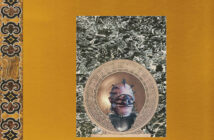
This music has space in it, around it, beyond its borders. It’s about traces and remnants that are left behind from something that once lived, something that held quarters inside its walls. For want of a better word, it feels delicate, this Carapace.
Though the duo responsible for these sounds cut their teeth in bands as diverse as the folk-pop oriented Major Chord and noisier Front of Van, their resulting collaboration takes little from these origins except for a true love of meshing a variety of aural echoes together. The difficulty, then, is finding a suitable entry point to begin to describe the luscious flow this album has. ‘Something Good’ is perhaps the best place to start, though this realisation doesn’ come immediately, it takes several listens, indeed almost ten, to appreciate the gentle majesty of this track. It’s disjointed – thoroughly so – but recalls some glorious folk-pop moments of yesteryear complete with an extra beautiful, indescribable touch that manages to transcend any particular notions of the here and now.
There are field recordings, too, but Carapace is not swamped in them. Fragments of kora, violin, melodica and glockenspiel enter the proceedings – all performed and integrated with such grace that they end up floating over you like some sort of quaint dream, a fleeting memory that doesn’ return until the play button is pressed again. Fortunately the melodies never escape the billowing chambers, but grow ever more with each listen, slowly and gradually taking the place of the experience that its creators had when making this record. Intimate and quirky at the same time, the strains of ‘Happy Bats’ marry a gentle strum with a reverberating hum, layers upon layers of sound nestled within the walls of the song.
All too soon, the proceedings end with ‘Should There Be Violence?’, the epitome of the Children of the Wave experience. It feels as if there are at least three separate songs within this final opus, a sprawling experience that takes over thirteen minutes to fully unfold with a lengthy void between each movement, as it were. For all the languid moments though, Carapace seeps into the real world and exudes a vibrancy that’s simply astonishing to behold. The shell is no longer a cage to store these experiences but a fully fledged home; a place that can be returned to time and time again to explore the delights within.
Alexandra Savvides



